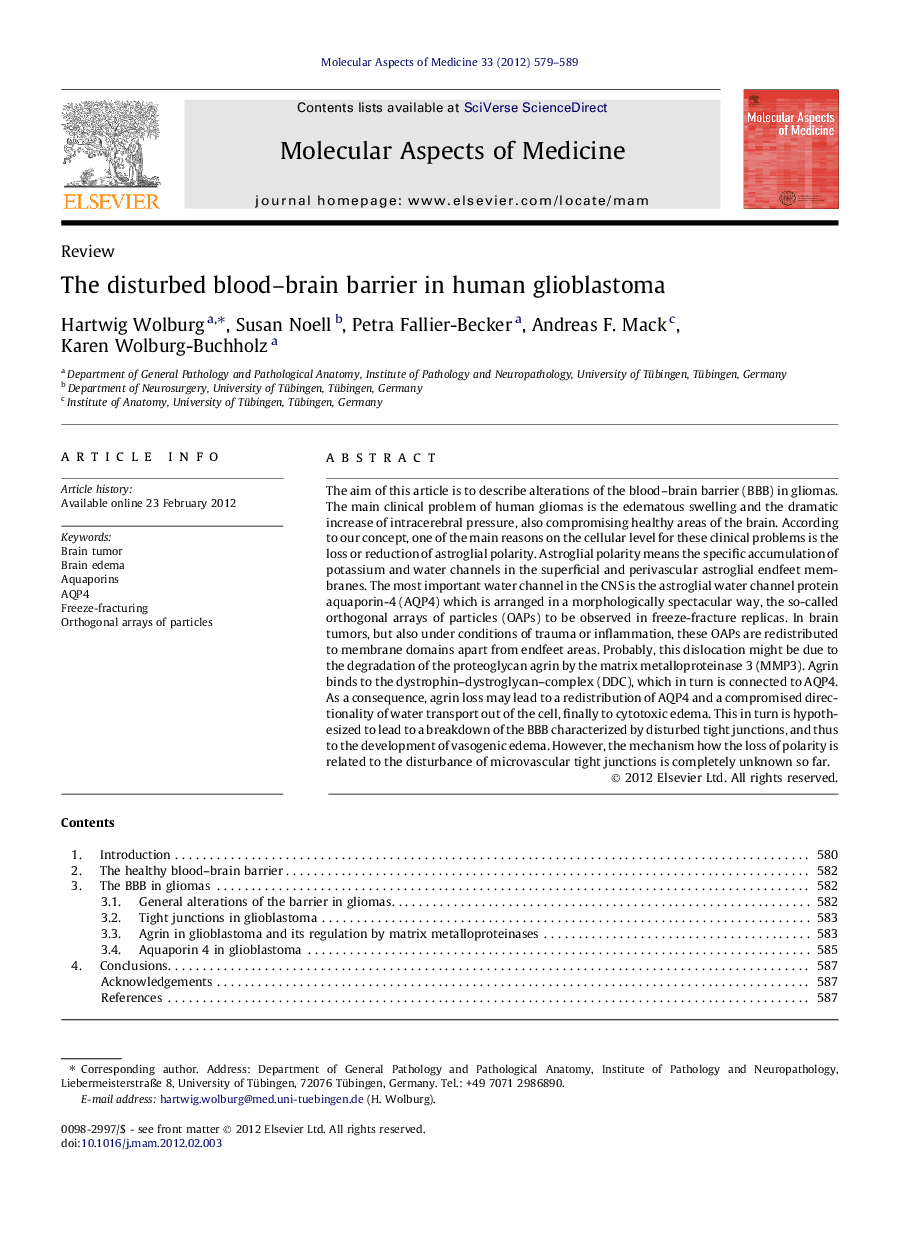| Article ID | Journal | Published Year | Pages | File Type |
|---|---|---|---|---|
| 1995794 | Molecular Aspects of Medicine | 2012 | 11 Pages |
The aim of this article is to describe alterations of the blood–brain barrier (BBB) in gliomas. The main clinical problem of human gliomas is the edematous swelling and the dramatic increase of intracerebral pressure, also compromising healthy areas of the brain. According to our concept, one of the main reasons on the cellular level for these clinical problems is the loss or reduction of astroglial polarity. Astroglial polarity means the specific accumulation of potassium and water channels in the superficial and perivascular astroglial endfeet membranes. The most important water channel in the CNS is the astroglial water channel protein aquaporin-4 (AQP4) which is arranged in a morphologically spectacular way, the so-called orthogonal arrays of particles (OAPs) to be observed in freeze-fracture replicas. In brain tumors, but also under conditions of trauma or inflammation, these OAPs are redistributed to membrane domains apart from endfeet areas. Probably, this dislocation might be due to the degradation of the proteoglycan agrin by the matrix metalloproteinase 3 (MMP3). Agrin binds to the dystrophin–dystroglycan–complex (DDC), which in turn is connected to AQP4. As a consequence, agrin loss may lead to a redistribution of AQP4 and a compromised directionality of water transport out of the cell, finally to cytotoxic edema. This in turn is hypothesized to lead to a breakdown of the BBB characterized by disturbed tight junctions, and thus to the development of vasogenic edema. However, the mechanism how the loss of polarity is related to the disturbance of microvascular tight junctions is completely unknown so far.
